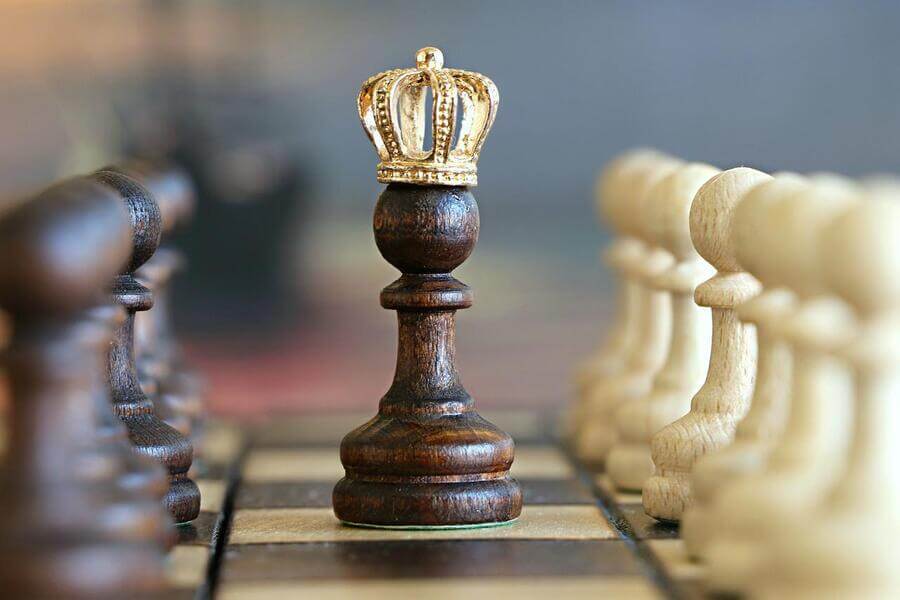No products in the cart.
Chess Rules & Instructions
Chess Pawn: How To Move, Capture And Promote Pawns
“How to play pawns in chess” is on the list of the most asked questions, especially for beginners who just started playing chess for a couple of days. Some people consider the pawn, one of the six pieces on the luxury chess board, to be the weakest piece of the game. If you share the same idea, then you are completely unaware of how powerful a pawn can become if it is played properly. This post provides you with all the basic knowledge you should know about pawns.
Table of Contents
Pawn In Chess
There are totally 16 pawns on a chess board, 8 white and 8 black. White pawns are located on the second row (or rank) of the board, while black pawns are on the seventh one. The pawns can be seen as “two fences” that help protect other pieces behind them.
The reason why pawns are called “weak pieces” lie in the fact that each pawn is worth only 1 point (the lowest compared to other pieces). However, once the time has come, it can transfer into a knight, a bishop, a rook, or even a queen (only the king is not allowed), basically almost any piece that the player wants (explained later in the post). This will definitely pose a threat to the rival.
Another interesting fact about pawns is that they are the pieces with the biggest number of unusual and special moves added in the chess game.
How To Move A Pawn In Chess
Pawn moves in chess are really simple. They can only go forward for 1 or 2 squares and never move backward. Note this in mind, the only time a pawn can move 2 squares is in its first move (out of the second or seventh row), when players can choose to move the pawn one or two squares. After that, it can only move forward 1 square.
If the pawn is blocked by a piece in front of it, it cannot move or jump pass through that piece. The only piece that can do so is the knight.
How A Pawn Captures In Chess
There are two ways for a pawn to capture another piece.
Pawn Captures In Chess
This is the basic capturing rule of the pawn. It attacks diagonally the pieces in front of it. However, it cannot ever move diagonally. This is also the only piece that moves and captures in different ways.
En Passant In Chess
This is an exceptional move for pawns. The French term for “in passing” is “en passant.” Only when the pawn advances two squares on its first move does this rule apply.
If a player’s pawn could have legally captured an opponent’s moving pawn if it had only moved one square instead of two, the player may declare “en passant” on his or her subsequent turn and move the pawn diagonally onto the square that the opponent’s pawn passed, legally capturing the pawn as if it had only moved one square. When the first pawn has passed, this special move must be made immediately; otherwise, the chance to capture it will be lost.
Pawn Promotion In Chess
As mentioned before, the pawns can become real beasts if they can transfer into any other pieces except the king. The only thing you have to do is move the pawn to the opposite edge of the chess board. This new piece then replaces the pawn on that exact same square it standing and moves following the rules applied to that piece.
A pawn can be “upgraded” to a queen, bishop, rook, or knight, but as the queen is the most powerful piece, many people will choose to promote a pawn into a queen. Pawn is indeed the only piece that may be promoted.
Basic Pawn Structures In Chess
Learning chess structures, or to be more specific, pawn structures, can be a tough and long-term process. However, beginners can start by bearing in mind some of these basic guidelines to improve their pawn gameplay.
Pawn Structure #1 – Passed Pawn
A passed pawn is a pawn that may advance without being blocked by any rival pieces. As the prospect of promotion places your opponent at a significant disadvantage, a passed pawn has the potential to be a very strong piece in the endgame.
Pawn Structure #2 – Connected Pawn
Two or more pawns that are diagonally nearby and may consequently defend one another are referred to as connected pawns. One of the strongest pawn constructions is made up of connected pawns, which may prevent opposing pieces from moving and shield them from attack.
Pawn Structure #3 – Isolated Pawn
In chess, an isolated pawn is not shielded by any of your other same-color pieces. Pawns that are left alone are more vulnerable to attacks from an opponent’s piece. Isolated pawns can be shielded by other important pieces in the opening or middlegame, but they could be a fatal flaw in the closing stages of the game.
Pawn Structure #4 – Backward Pawn
A linked pawn that is unable to advance without being captured by a pawn belonging to the opposing side is said to be backward. Pawns that cannot safely move forward are in a disadvantageous situation.
Pawn Structure #5 – Doubled Pawns
Two pawns of the same color that are placed in the same file are known as doubled pawns. This pawn arrangement is among the weakest since the pawns cannot protect one another and can both be blocked by a pawn belonging to your opponent.






